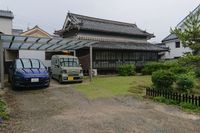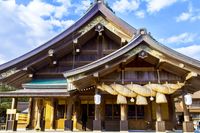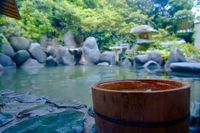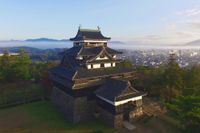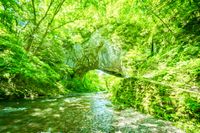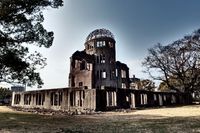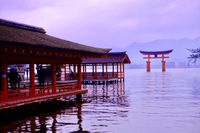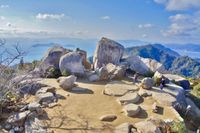Iwami Ginzan Silver Mine
島根県/大田市

Description
This is Japan's largest silver mine, located in Shimane prefecture, and is a world heritage site. It is said that from the Sengoku to the Edo era(1467~1868), that this mine produced one third of the world's silver. The area is characteristic for its environmentally friendly approach to the surrounding area, which ensures minimum damage to mountains, no cutting of forests or digging narrow tunnels or other mining.
Homepage
Address
Nearby Car Night Spots
Nearby Activities
There is no nearby activities
Ranking Stations
Vanlife BASE | 45 min. from Narita Airport / Perfect for campervan travel/A seaside town rich in nature/Japanese countryside town/welcome traveler
¥7,000〜
/ per nightChiba Koseki, Kujukuri-machi, Sambu-gun
5.0
(61)(Bonfire BBQ) Chita Mihama Noma Beach Station
¥3,500〜
/ per nightAichi Noma, Mihamacho, Chita County
4.7
(42)Shin Meishin Suzuka PA (inbound) RV Station Suzuka * With Power!
¥2,200〜
/ per nightMie Yamamotocho, Suzuka-shi
4.3
(156)Nearby Drive Spots
Izumo Taisha Shrine
This is Japan's oldest shrine, built before 0 BC. It is said that that it houses the great God Okuninushi no Mikoto, which is said to have surrounded the country to the God Amaterasu. On Kannazuki (October) all of the 8 million Gods, (excluding the two aforementioned Gods) are said to gather at this place and hold a ceremonial discussion regarding the destiny of the humans on the planet. For this reason, it has been revered and worshipped as a place of good fortune since its inception.
Tamatsukuri Onsen
This is an onsen in the northern part of Shimane prefecture. It has 1300 years of history, and was registered as a "Kami no Yu" (God's hot spring) by the Izumo Kuni Fudoki (which is an ancient report on provincial culture). The area has been historically famous for the three sacred imperial treasures, which includes various jewelry items which were made in this area. Along the Tamayu River, there are lines of cherry blossom trees, as well as "Sukiyazukuri" (a refined, well cultivated traditional Japanese architecture style) Japanese Ryokan, which creates a calm and stately atmosphere.
Matsue Castle
This is a castle built in 1611 under the instruction of Horio Tadauji. It is one of the 12 remaining castle towers, and also one of Japan's best 5 castles. The castle tower is situated on a small mountain, 29 meters in height, where Lake Shinji can be viewed from the top. The castle roof tower design has four such roofs stacked on top of each other in a staggered fashion, facing north, south, east and west, resembling the open wings of a thousand birds, which has given it its alternate moniker of "Chidori Castle" (Thousand bird castle). 松江城 © 島根県 クリエイティブコモンズライセンス(表示4.0 国際)https://creativecommons.org/licenses/by/4.0/
Taishakukyo Gorge
This is a canyon of 18 km in length in the eastern part of Hiroshima prefecture. It is famous for its natural bridge, Onbashi, formed by the erosion of limestone over the years by river water. In addition, in Lake Shinryu, there are numerous stunning views such as the greenery in spring, the autumn leaves, and the numerous water birds that inhabit the area.
Atomic Bomb Dome
This building was the victim of the world's first atomic bomb during the World WarⅡ. It was originally opened as an establishment to display products of the prefecture. The bombing on August 6th led to the tragic destruction of 13.2 million square meters of land, a death toll of about 140,000 people, and is registered as a World Heritage Site in commemoration and remembrance of the tragedy, with the wish that such a tragedy will never happen again.
Itsukushima Shrine
A shrine built in 593 AD, by Saeki Kuramoto, and registered as a world heritage site. The main Gods are known as the Munakata three goddesses Ichiki Shima Hime, Takiribine no Mikoto and Tazukihime no Mikoto. It was famous for being worshipped by the Taira clan, and under the instruction of Taira Kiyomori, a military leader, large Torii gates were built which appear to float in the water. It is known as the "Aki no Miyajima" and is known as one of Japan's three greatest viewpoints. Along with Kasuga Taisha and Kehi Jingu shrines, the Torii gates are officially classified as one of the three greatest in Japan.
Mount Misen
This is a mountain registered as a World Heritage Site along with Itsukushima Shrine. In 806 AD, the great teacher and poet Kukai opened this mountain as a place of reverence and worship. There were also several stones known as Iwakura which were objects of Shinto worship, and has therefore been known as a long standing place of reverence and worship, consistently drawing in visitors.


